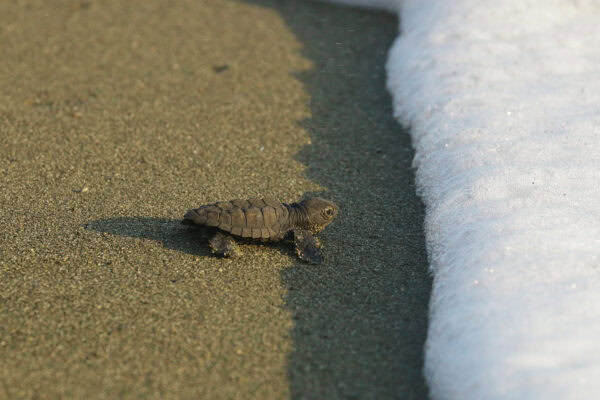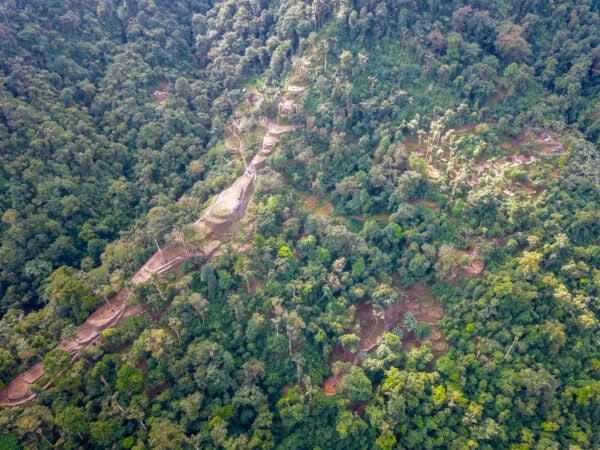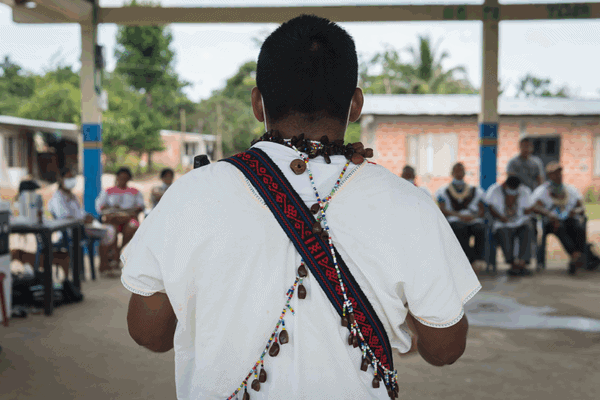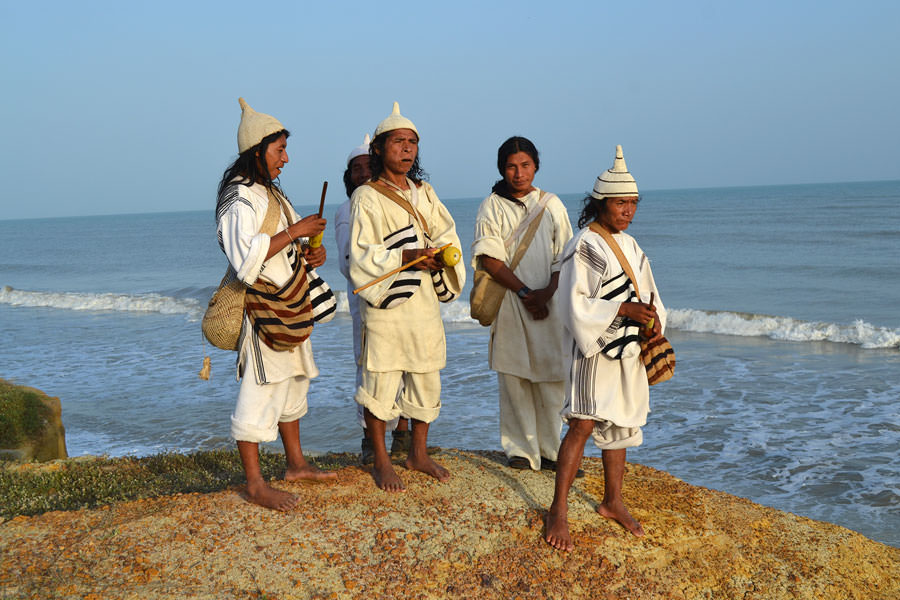
We know that our partner communities can best safeguard their forests when they have access to their traditional territories, sustainable livelihoods, and intact traditions. But there is often more. The elders frequently tell us that in order for their communities to truly flourish, they need to control lands that are sacred to them.
From our conservationist perspective, we recognize that sacred sites frequently coincide with areas of exceptionally high biodiversity. They may be located at headwaters of rivers, in fragile transitional zones, or in areas of vital habitat for endangered species. But we can’t always draw a direct line from indigenous beliefs to a modern interpretation of them. The “explanation” for some sacred sites simply eludes us.
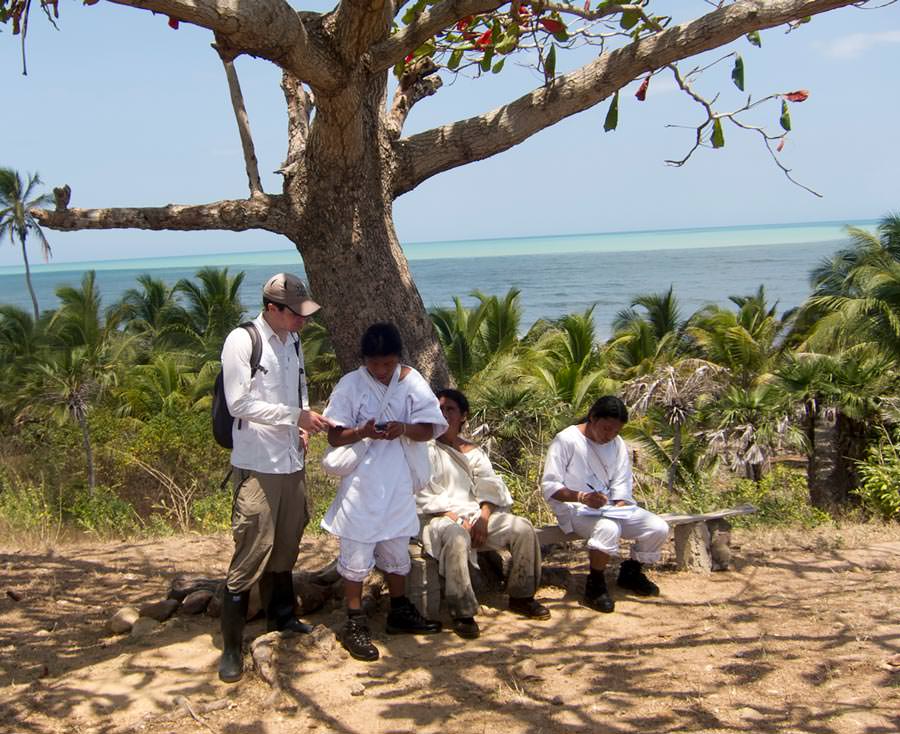
Many of these sites were lost when tribal people were forced to flee the European conquest of the Americas. One example is the sacred world of the Kogi people, who now live high in the Sierra Nevada de Santa Marta on the northeast coast of Colombia. The Kogi believe their territories are connected by a network of invisible points. Certain nodes in this web are considered places of power, where ceremonies are made to help sustain the processes of nature.
The Kogi once cared for a ring of fifty-four sacred sites around the Sierras, which they call the Black Line (Linea Negra). When we began our partnership with the Kogi, most of the Black Line was out of their control and all the sites were gravely endangered by development or mining.
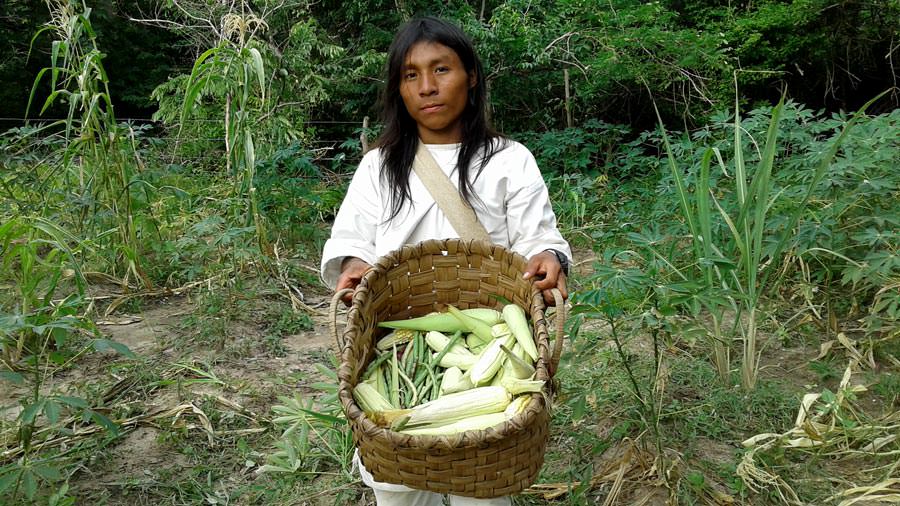
The most significant of these sites are along the Caribbean, where Kogi come to gather shells for important ceremonies. We were able to purchase one of those sites, Jaba Tañiwashkaka, a very degraded piece of land along the ocean, and with help from the national government, the land was returned to the Kogi in 2013.
While we are unable to directly perceive the sacred nature of Jaba, we have witnessed the phenomenal resurrection of an ecosystem.
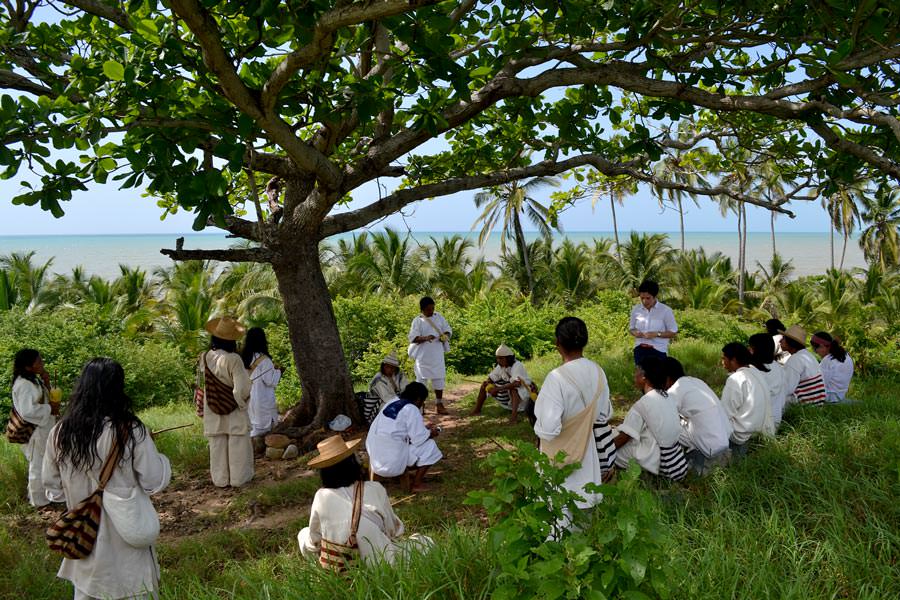
Since the Kogi took control of the land, they have cleared the land of trash and established a small community of families to guard it. Wetlands and mangroves have been restored, the waters are slowly decontaminating, and wildlife is returning. The community built two temples where people from related tribes can come, in safety, to make offerings to the Sea.
This restoration inspires our partners and strengthens their resolve to recover the entire Black Line.
Share this post
Bring awareness to our projects and mission by sharing this post with your friends.


